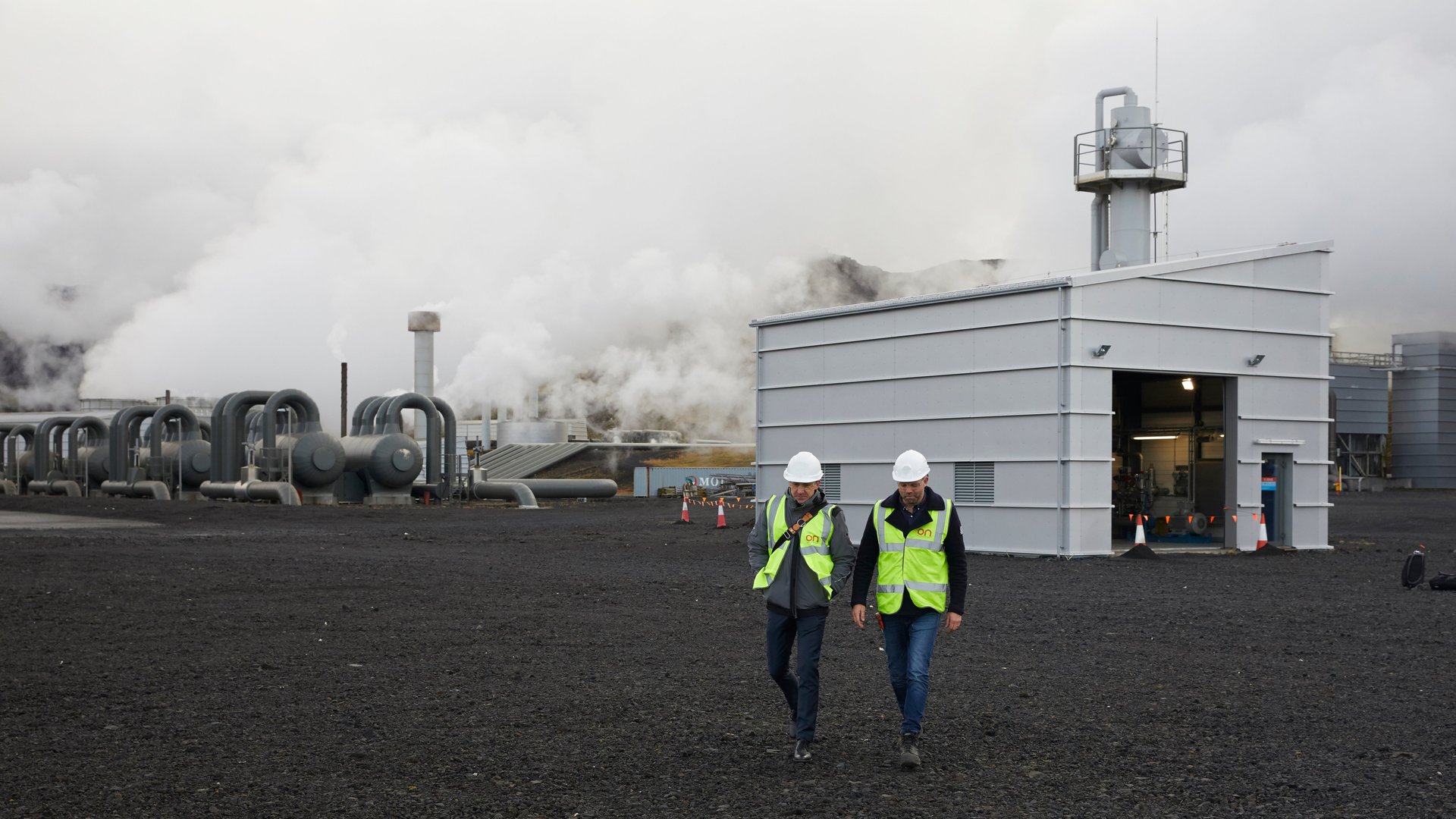You can now pay to turn your carbon emissions to stone
In an effort to avoid emissions from air travel, teenage climate activist Greta Thunberg recently chose to sail across the Atlantic to attend a climate summit in New York in September. It’s a bold, visible symbol of the sacrifices necessary to reduce global emissions—but still an impractical choice for most climate-conscious travelers.


In an effort to avoid emissions from air travel, teenage climate activist Greta Thunberg recently chose to sail across the Atlantic to attend a climate summit in New York in September. It’s a bold, visible symbol of the sacrifices necessary to reduce global emissions—but still an impractical choice for most climate-conscious travelers.
One option, if you care about the environment and can’t stop flying, is to offset your personal carbon use—by turning it into stone.
Starting in June, a company called Climeworks began offering customers the option to buy a personal carbon offset subscription. You can choose one of three tiers: €7 a month (~$8) will pay for trapping 85 kg of carbon dioxide in a year (about the same as driving 700 km or 435 miles in a gasoline car); €21 a month will get you 255 kg in a year; and €49 a month will convert 600 kg of carbon dioxide into stone. You can also customize your payments up to as much as €2,000 per month to offset 25,000 kg.
At its cheapest, Climeworks’ offset scheme will cost a customer about $1,100 to capture and permanently sequester 1 metric ton of carbon dioxide. With other offsets available for as low as $0.28 per metric ton, why does Climeworks think people will pay such a steep price?
The first reason is certainty. Most types of carbon offsets are dodgy: It’s hard to be sure that approaches to trap carbon from the air (by planting trees, for example) or prevent it from ever being released (such as by supporting wind farm construction) will actually offset the use of fossil fuels. But the Swiss startup guarantees, based on how much you pay, that a certain amount of carbon dioxide will be removed from the atmosphere and turned into stone.
Climeworks is one of just three companies in the world that have the technology to draw carbon dioxide from the air, called direct air capture (DAC). And it already has a few small commercial plants running.
One in Zurich traps carbon dioxide from the air and feeds it into a greenhouse to boost the productivity of plants inside. Another in Italy converts carbon dioxide into methane—essentially creating “carbon neutral” natural gas—which can then be pumped into the gas networks. And a third in Iceland captures carbon dioxide and pumps it underground, where it is converted in to stone in less than two years.
The other part of Climeworks’ proposition to subscribers is more altruistic: Offset buyers will have supported the development of a technology the world desperately needs.
Climeworks’ three plants capture at most a few metric tons of carbon dioxide each day—making operations expensive. To bring down costs, it needs to scale up the work, fast. So by launching its offset subscription, it’s looking to individuals to help fund an expansion of its Iceland plant. The more money it raises, the bigger the expansion.
Its competitors, Carbon Engineering in Canada and Global Thermostat in the US, have recently found partners in oil companies, Occidental Petroleum and ExxonMobil respectively, that can fund plants with the ability to capture hundreds or thousands of metric tons of carbon dioxide every day.
Climeworks doesn’t yet have the backing of corporate giants. Perhaps people power can help.